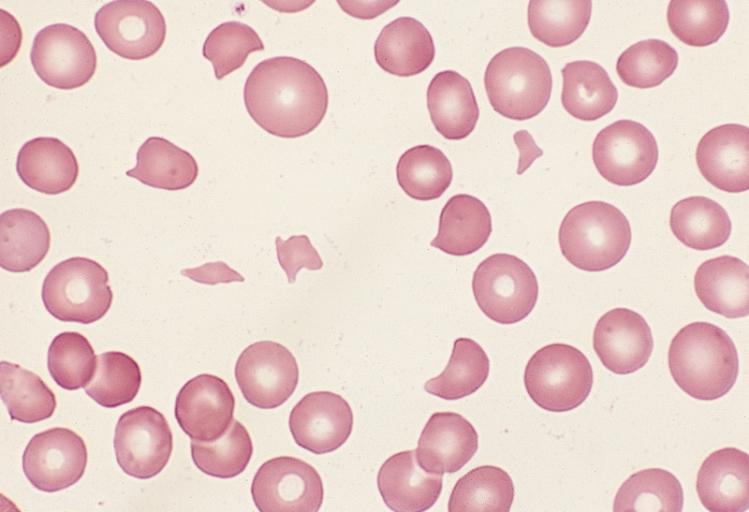Hemolytic anemia: Difference between revisions
| Line 30: | Line 30: | ||
Signs of [[anemia]] are generally present ([[Fatigue (physical)|fatigue]], later [[heart failure]]). Jaundice may be present. | Signs of [[anemia]] are generally present ([[Fatigue (physical)|fatigue]], later [[heart failure]]). Jaundice may be present. | ||
*certain aspects of the medical history can suggest a cause for hemolysis (drugs, [[fava bean]] or other sensitivity, [[heart valve prosthesis|prosthetic heart valve]], or another medical illness) | *certain aspects of the medical history can suggest a cause for hemolysis (drugs, [[fava bean]] or other sensitivity, [[heart valve prosthesis|prosthetic heart valve]], or another medical illness) | ||
==Classification of hemolytic anaemias== | ==Classification of hemolytic anaemias== | ||
Revision as of 16:22, 28 August 2012
| Hemolytic anemia | |
 | |
|---|---|
| Bone Marrow: Leukoerythroblastic Reaction and Microangiopathic Hemolytic Anemia in a Patient with Bone Marrow Metastasis Image courtesy of Professor Peter Anderson DVM PhD and published with permission © PEIR, University of Alabama at Birmingham, Department of Pathology | |
| ICD-10 | D55-D59 |
| ICD-9 | 282, 283, 773 |
| DiseasesDB | 5534 |
| MedlinePlus | 000571 |
|
Hemolytic anemia Microchapters |
|
Diagnosis |
|---|
|
Treatment |
|
Case Studies |
|
Hemolytic anemia On the Web |
|
American Roentgen Ray Society Images of Hemolytic anemia |
For patient information on this, click here
Editor-In-Chief: C. Michael Gibson, M.S., M.D. [1]
Synonyms and keywords: Haemolytic anaemia
Overview
In a healthy person, a red blood cell survives 90 to 120 days (on average) in the circulation, so about 1% of human red blood cells break down each day. The spleen (part of the reticulo-endothelial system) is the main organ which removes old and damaged RBCs from the circulation. In health the break down and removal of RBCs from the circulation is matched by the production of new RBCs in the bone marrow.
When the rate of breakdown increases, the body compensates by producing more RBCs, but if compensation is inadequate clinical problems can appear. Breakdown of RBCs can exceed the rate that the body can make RBCs and so anemia can develop. The breakdown products of hemoglobin will accumulate in the blood causing jaundice and be excreted in the urine causing the urine to become dark brown in colour.
Symptoms
Signs of anemia are generally present (fatigue, later heart failure). Jaundice may be present.
- certain aspects of the medical history can suggest a cause for hemolysis (drugs, fava bean or other sensitivity, prosthetic heart valve, or another medical illness)
Classification of hemolytic anaemias
ar:فقر الدم التحللي de:Hämolytische Anämie sr:Хемолитичка анемија